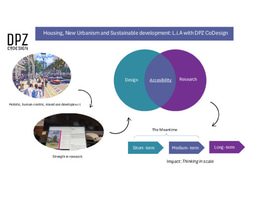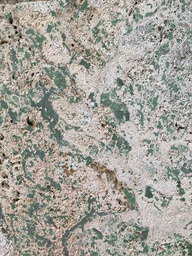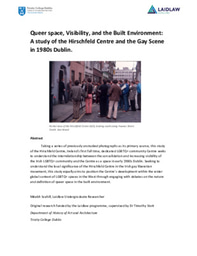L.i.A Impact Report and Reflective Essay Summer 2
I undertook my Leadership-in-Action project at DPZ CoDesign, an urban design firm in Miami, Florida. DPZ are leaders in New Urbanism, a movement which has been challenging unsustainable development models and practicing alternatives since the 1980s. Since undertaking my research last summer on Dublin’s Hirschfeld Centre, I had grown increasingly more interested in the built environment, and its broader impact. Rather than historic inquiry into the built environment however, my work with DPZ was very much focused on the here and now, and indeed the future. Under the broad theme of sustainable urban development (11th UNSDG), my Leadership in Action (hereafter LiA) project focused on researching and highlighting resilient design solutions for climate change.
Leaders within the New Urbanism movement, DPZ’s approach to urbanism foregrounds sustainability, and is at its core, human centric. Promoting mixed-use, walkable communities, DPZ’s urban design work, particularly in its local work in South Florida, has increasingly begun to explicitly focus on climate resiliency, given the very real threat of sea level rise and intensifying tropical storms facing the region. The intended scope of my LiA project with DPZ, was the collating and written promotion of these recent projects, with the goal of making their work more accessible and visible to the general public. However, over the course of my six weeks in Florida, my work with DPZ evolved into more in depth research on adaptation as a climate concept for a future publication on adapting urban settlement to the immediate effects of climate change. In collaboration with Galina Tachieva, managing partner of DPZ, we began to plan the edited collection, tentatively titled ‘In the Meantime: Elevating and Strengthening coastal communities.’ This work on In the Meantime came to shape my LiA experience, forming the basis of my six week project, but also providing a framework through which I came to conceptualise the potential impact of my work.
Relevant stakeholders, events and activities
My research for In the Meantime was highly collaborative with Galina Tachieva. We officially met weekly, but unofficially would often stop by each other’s desks with updates on work as it progressed. The bulk of my work on In the Meantime was spent conducting a comprehensive literature review of adaptation as a climate concept, tracking its evolution in relation to both policy and popular culture. This was interspersed with the more practical work needed to plan the publication, like writing an abstract to send to potential contributors and refining a chapter list. My shorter, promotional work on various DPZ projects was overseen by another partner, Xavier Iglesias, who worked remotely. Navigating a remote working relationship was an experience in itself. It required learning to somewhat overcommunicate what I was working on for clarity’s sake. Probably the most novel working experience I undertook while at DPZ however was the work on native habitat restoration for the charette of an Orlando-based project. The charette is an essential element of DPZ’s design process. A week-long working design session, the charette consists of interactive meetings with key stakeholders with continuous feedback shaping the evolving design. The Orlando charette was due to take place at the end of my final week in Florida. The week’s in the run up were dominated by intense, office wide research and preparation. Given my skills in historical research, I was assigned the task of researching a potential native habitat restoration at the site. It required historical research, but also crucially the presentation of this research in a visual, rather than written format, for the charette booklet. I found it more challenging than expected to condense my research into concise visual format. However, it proved to be a lesson in how best to communicate information to a non-specialist audience and highlighted the important intersection between good design and effective, accessible research.
Impact
Unfortunately, due to scheduling conflicts, I was not able to attend the Orlando charette in person. However, the team reported that the presentation on habitat restoration featuring my work was well received and hopefully will be implemented in future. If so, the habitat restoration will be an outcome from my LiA with tangible impact. Feeling like the work I was doing would have little concrete impact was a major challenge I struggled with throughout my LiA. However, discussions with Galina, and my work outlining the scope of In the Meantime, helped provide perspective. Thinking about climate change and its impacts requires thinking in scale and recognising interconnection. Given the universal nature of climate change, interventions at a local level are inexplicably, though not always visibly, interconnected with the global. The specific framing of In the Meantime too helped affirm this. With much recent literature on adaptation focusing on the long-term consequences of climate change, and the eventual need for radical adaptation through migration[1] In the Meantime instead operates in the short to medium term. Not discounting the possible need for relocation in the future, the publication argues that it is still possible, in the meantime, to deliver meaningful improvements to the lives of those most imminently threatened. Applying this scaled thinking to my LiA helped to contextualise the work I had done, and provided reassurance of its potential impact in the medium to longer term. Still in its early stages, In the Meantime won’t likely see publication for at least a year. But the work I have done should act as a solid foundation and will be interconnected with its wider impact. Equally, the climate-resilient projects now visible on DPZ’s website as a result of my work may have little impact in the short term, but will hopefully encourage and inform future climate-conscious, sustainable development.
Reflective report
My research into Dublin’s first LGBTQ+ community space, the Hirschfeld Centre during my summer 1 research project led me to become increasingly interested in the built environment, and urbanism more broadly, with a specific interest in affective experiences of urban space and architecture. This has informed my choices of modules at university and ended up determining the direction of my LiA. I was drawn to DPZ’s work because of their holistic approach to urbanism, specifically their recognition of the interrelation between human experience, environmental impact, racial and economic inequality, and urban design. My work at DPZ this summer during my LiA has affirmed my growing conviction of the centrality of the built environment, and in particular housing, as a central, touchstone issue. A stand-out incident from my time in Miami this summer was a discussion that occurred at the end of a presentation I gave on historic architecture and housing in Dublin. This presentation was not part of my official work, but rather something I volunteered to do. The rest of the office had little knowledge of Irish history, and I jumped at the opportunity to discuss it (a favourite subject.) The presentation took place during ‘lunch and learn,’ an office-wide tradition where every Thursday lunch would be provided, and someone, either in person or remotely, would present on a past or ongoing project. I deeply enjoyed the presentation I gave on the history of architecture and housing in Dublin, but it was the discussion that followed, a general discussion of housing and affordability, that was truly memorable. The general conversation around historic housing developments led to a discussion of contemporary housing. Many of the younger employees of the office began to compare experiences of housing, emphasising the lack of affordability. The conversion became intense and emotive. It highlighted the personal stakes at root in all issues of housing, and its intersection with various other areas of inequality and insecurity, I’ve become increasingly more interested in housing and rights to housing, over the course of the last two years, to the point of making it the focus of my final year dissertation.
The critical lens I’ve taken to leadership, in its various manifestations and definitions, over the course of this program has given me a better understanding of what I hope to embody as a leader, but also the expectations I have of current leaders, particularly at a local and governmental level. In this, and so many others my experience during the Laidlaw program has become so intertwined with developments in other areas of my life that it seems impossible to disentangle them. The program has led to amazing opportunities. I have had experiences and met people, who I never would have otherwise. As I reflect, I am genuinely very grateful. The program has also been at times uncomfortable. With the new horizons the program has offered, has come a sense of instability. In a breakout room of one of the Oxford Character Project sessions, I jokingly responded to the question of whether my conception of leadership had changed by saying I think I had become a worse leader. I think rather as I have interrogated my own and other’s definitions of leadership, I have become more aware of my areas in need of improvement, alongside my strengths.
Curiosity, Connection and Community: Defining Leadership
As my experience with the Laidlaw program draws to its conclusion, I have been trying to reflect and redefine my conception of leadership. Reviewing my strengths profile as part of this summer’s strengths coaching proved a useful exerecise; I had forgotten that Curiosity had been flagged as one of my top strengths. When challenged to reflect on instances where curiosity informs my experiences, I found I could find it embedded in many aspects of my life, professionally and personally. Curiosity informs my passion for research and learning but is also manifest in how I navigate interpersonal relationships. For me, Curiosity represents a way to make connections with others, and a way for me to frame how I approach interactions, with authenticity and openness.
Being a Laidlaw Scholar has given me the space to engage with research subjects I am truly passionate about and enabled me to form connections with some truly amazing people. Connection has been at the core of all the experiences I have been lucky enough to have throughout this program. My research in summer 1 enabled me to form connections with LGBTQ+ community on campus and the wider city. On a personal level, it affirmed my own security in my queer identity within the context of community, something that I am sure will continue to inform my life far beyond the tenure of this program. My understanding myself within context of local community was uprooted during my LiA experience. I floundered slightly in the unfamiliar environment. However, I soon found security in my ability to form and draw on interpersonal connections. I doubt ( or maybe hope) I’ll find myself in a breakout zoom room in the near future being asked about how I view myself as a leader. But I think I’d have a firmer answer now. My answer will be more securely rooted in the role I hope to embody within the context of community. My memories of the interview I sat before being accepted to the Laidlaw program exist in a vague nerve-infused blur. But I do remember being asked what kind of leader I would like to be. I answered, ‘one who leads through education,’ and when queried on what I meant, (I’m not sure I even knew what I meant) said that it would be a type of leader who encouraged others to learn for themselves. The core of that still stands true to me, but my slightly more evolved, and surer answer no. I’d like to be a leader who has the ability to form and facilitate genuine connection, with passion, authenticity, and curiosity where I can.
[1] For examples see Brian Stone Jr., Radical Adaptation, 2024. Abraham Lustgarten, On the Move: The Overheating Earth and the Uprooting of America, 2024.




Please sign in
If you are a registered user on Laidlaw Scholars Network, please sign in